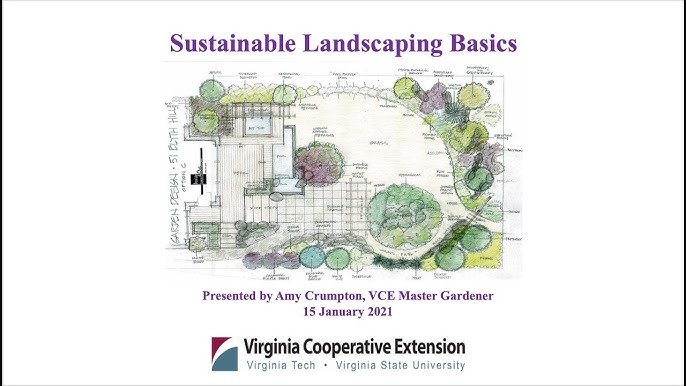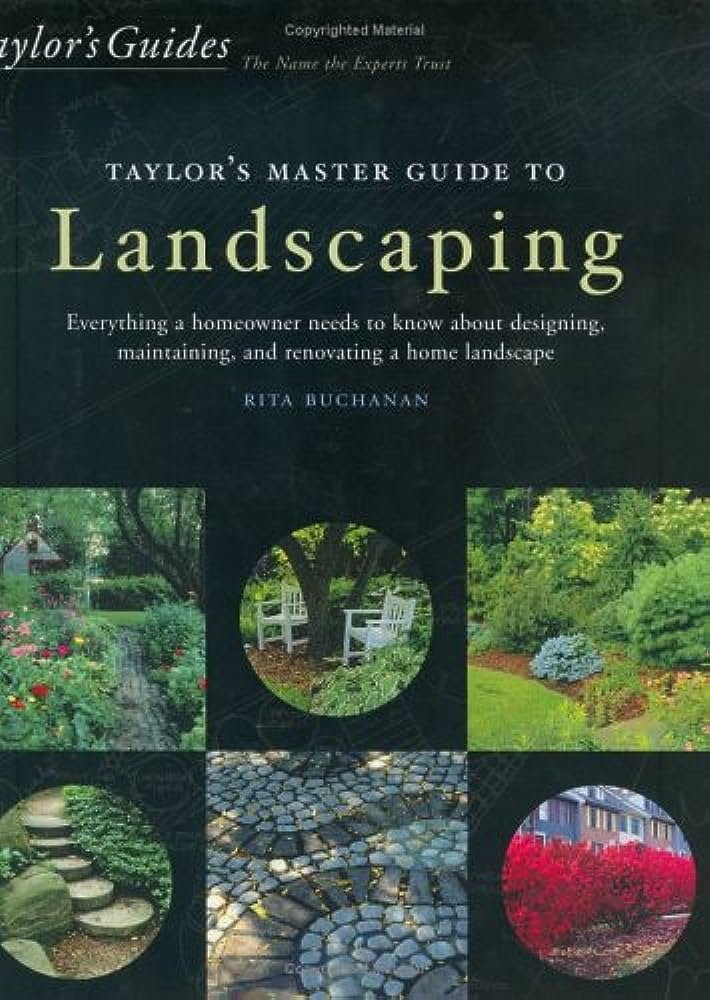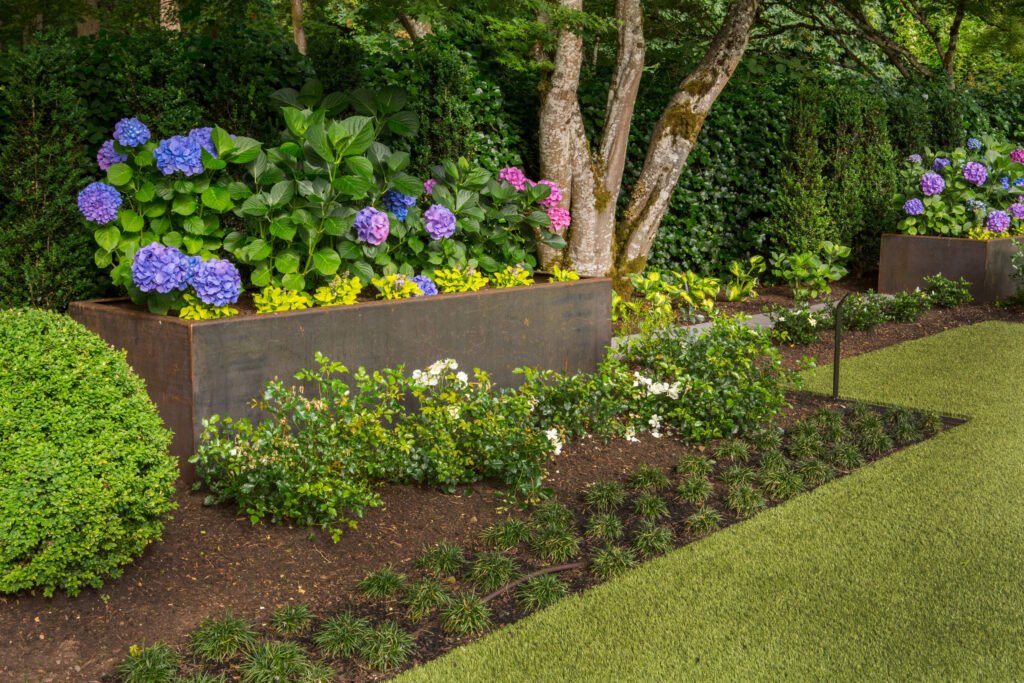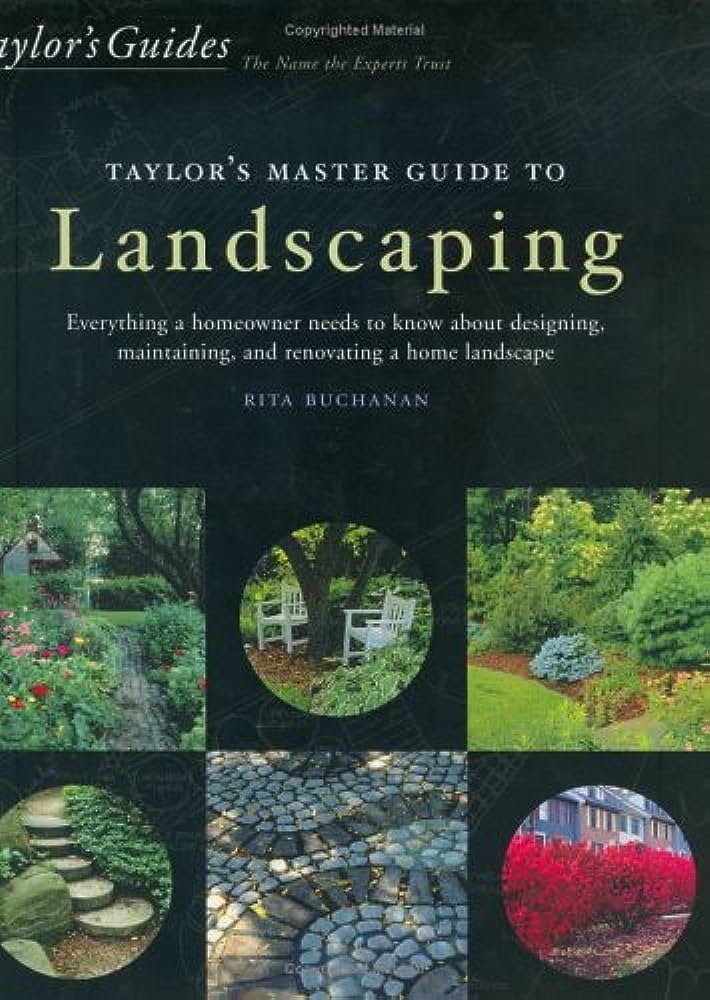In “Master the Basics of Green Landscaping,” you will discover a wealth of ideas and tips to transform your outdoor space into a sustainable and visually stunning oasis. Whether you are a gardening novice or simply looking for ways to make your yard more eco-friendly, this article is your ultimate guide. From choosing the right plants to implementing water-saving techniques, you’ll gain the knowledge and inspiration needed to create a lush and sustainable garden that will leave both your neighbors and the planet impressed.

This image is property of i.ytimg.com.
Understanding Green Landscaping
Definition
Green landscaping, also known as sustainable or environmentally friendly landscaping, refers to the practice of designing, creating, and maintaining outdoor spaces that are environmentally responsible and resource-efficient. It involves utilizing techniques and materials that have a minimal impact on the environment while maximizing benefits for both the ecosystem and the individuals enjoying the landscape.
Importance
Green landscaping is essential for several reasons. Firstly, it helps to conserve resources such as water, energy, and nutrients. By implementing sustainable practices, you can significantly reduce your water usage, lower your energy consumption, and minimize the need for fertilizers and pesticides. Secondly, green landscaping helps to enhance biodiversity and promote the health of local ecosystems. By incorporating native plants and creating habitats for wildlife, you can support the natural ecosystem and contribute to the preservation of local plant and animal species. Lastly, green landscaping improves the overall well-being of individuals by providing aesthetic beauty, improving air quality, reducing noise pollution, and creating spaces for relaxation and recreation.
Benefits
Green landscaping offers a range of benefits, both tangible and intangible. Some of the key advantages include:
- Energy efficiency: By strategically planting trees and shrubs, you can provide shade and windbreak, reducing the need for cooling and heating energy in your home.
- Water conservation: Implementing water-efficient irrigation systems, choosing drought-tolerant plants, and practicing smart watering techniques can help conserve water and reduce your utility bills.
- Improved air quality: Plants absorb carbon dioxide and release oxygen, promoting cleaner and fresher air within your surroundings.
- Reduced pollution: By avoiding harmful chemicals, pesticides, and herbicides, you can minimize water pollution and prevent damage to the ecosystem.
- Increased property value: A well-maintained and aesthetically pleasing landscape can significantly enhance the value of your property.
- Wildlife habitat: By creating diverse habitats with native plants, you can attract birds, butterflies, bees, and other pollinators, contributing to the overall health of the ecosystem.
- Stress reduction: Being in a green environment has been proven to reduce stress levels and promote mental well-being.
Planning a Green Landscape
Assessing Your Space
Before embarking on your green landscaping journey, it’s crucial to assess your space thoroughly. Consider the size, topography, existing vegetation, and any natural features that may impact your landscape design. Take note of areas with varying sunlight exposure, soil drainage, and potential microclimates within your yard. This assessment will help you determine the most suitable areas for different plant species and features.
Setting Goals and Priorities
Think about your vision for your green landscape. What do you hope to achieve? Are you primarily focused on water conservation, energy efficiency, or enhancing biodiversity? Understanding your goals will guide your decision-making process when it comes to choosing the right plants, materials, and techniques for your landscape. It’s also essential to prioritize your goals based on feasibility and your long-term commitment to maintenance.
Considering Climate and Environment
Your local climate and environment will heavily influence the success of your green landscape. Take into account factors such as temperature range, average rainfall, wind patterns, and soil conditions. Research native plants that are well-adapted to your region’s climate and can thrive without extensive maintenance or irrigation. By selecting plants that are naturally suited to the local conditions, you can minimize water usage and create a more sustainable landscape.
Creating a Budget
A well-planned budget is crucial for any landscaping project, including green landscaping. Consider the costs of plants, materials, tools, and any professional assistance you may need. While green landscaping can save money in the long run through reduced water and energy expenses, it’s important to set a realistic budget and prioritize your expenses accordingly. Don’t forget to allocate funds for ongoing maintenance and potential future adjustments to your landscape.

This image is property of Amazon.com.
Choosing Eco-Friendly Plants
Native Plants
Choosing native plants is a cornerstone of green landscaping. Native plants are naturally adapted to the local climate, soil conditions, and pest pressures, making them more resilient and less reliant on additional resources. They provide food and habitats for native wildlife, support the local ecosystem, and require minimal maintenance. Native plants also tend to be more disease-resistant, reducing the need for chemical interventions.
Drought-Tolerant Plants
In regions prone to drought or with limited water availability, selecting drought-tolerant plants is essential for green landscaping. These plants have evolved to withstand long periods of dryness and minimal watering, making them ideal for water conservation. Succulents, ornamental grasses, and some Mediterranean plants are known for their drought tolerance. By incorporating these plants into your landscape, you can significantly reduce your water usage without compromising the beauty of your garden.
Pollinator-Friendly Plants
To support local pollinator populations and enhance biodiversity, it’s important to include pollinator-friendly plants in your green landscape. Bees, butterflies, and other insects play a crucial role in the pollination of plants, contributing to the reproduction of numerous species. Choose plants that provide nectar and pollen-rich flowers throughout the seasons, such as coneflowers, milkweed, and lavender. By attracting pollinators, you can ensure the health and abundance of your garden’s plant life.
Low-Maintenance Plants
If you’re looking for a low-maintenance green landscape, opt for plants that require minimal care and upkeep. Choose species that are naturally hardy, disease-resistant, and have a slow growth rate. This will help reduce the need for frequent pruning, fertilization, and watering. Examples of low-maintenance plants include perennials like daylilies and hostas, as well as evergreen shrubs such as junipers or yuccas.
Organic Gardening Practices
In addition to selecting the right plants, practicing organic gardening techniques is crucial for green landscaping. Avoid the use of synthetic pesticides, herbicides, and chemical fertilizers, as they can negatively impact the environment and harm beneficial organisms. Instead, opt for organic alternatives or natural pest control methods. Consider using compost or organic mulch to enrich the soil and provide a natural source of nutrients for your plants.
Water Conservation Strategies
Efficient Irrigation Systems
One of the most important aspects of green landscaping is water conservation. Investing in efficient irrigation systems can help maximize water usage while minimizing waste. Drip irrigation, for example, delivers water directly to the roots of plants, reducing evaporation and ensuring efficient absorption. Smart sprinkler systems with moisture sensors can also adjust watering based on the specific needs of your garden, preventing overwatering.
Rainwater Harvesting
Capturing rainwater is an excellent way to conserve water and reduce reliance on external water sources. Install rain barrels or cisterns beneath gutters to collect rainwater runoff from your roof. Use this collected water to irrigate your landscape during dry periods. Rainwater is natural and free of the chemicals often found in tap water, making it ideal for plants.
Smart Watering Techniques
Practicing smart watering techniques is essential for water conservation in green landscaping. Water your plants in the early morning or late evening when evaporation rates are lower. This allows the water to penetrate the soil before the heat of the day. Deep, infrequent watering promotes healthy root growth and reduces water waste. Regularly monitor soil moisture levels to ensure your plants are getting the right amount of water they need.
Mulching
Mulching is a simple yet effective water conservation technique. Apply a layer of organic mulch around your plants to help retain moisture, suppress weed growth, and regulate soil temperature. Mulch acts as a protective barrier, preventing evaporation and reducing the need for frequent watering. Choose mulch made from recycled materials or natural sources like wood chips, straw, or compost.

This image is property of i0.wp.com.
Soil Health and Fertilization
Soil Testing and Analysis
Maintaining healthy soil is crucial for a green landscape. Conduct regular soil testing to assess nutrient levels, pH balance, and soil composition. This information will help you determine the appropriate soil amendments and fertilizers required to optimize plant growth. A healthy soil ecosystem supports beneficial microorganisms and provides a solid foundation for your plants to thrive.
Composting
Composting is an excellent way to improve soil health and reduce waste. Collect organic materials, such as fruit and vegetable scraps, yard trimmings, and coffee grounds, and compost them in a designated bin or pile. Over time, these materials break down into nutrient-rich compost, which can be added to your soil as a natural fertilizer. Compost improves soil structure, enhances water retention, and promotes the growth of beneficial soil organisms.
Organic and Natural Fertilizers
Instead of relying on synthetic fertilizers, opt for organic or natural alternatives. Organic fertilizers, such as compost, manure, and seaweed extracts, release nutrients slowly and nourish the soil while minimizing the risk of nutrient runoff. Additionally, natural amendments like bone meal, blood meal, and fish emulsion provide specific nutrients essential for healthy plant growth. Incorporating these natural fertilizers ensures long-term soil fertility while minimizing environmental impact.
Natural Pest Control
Maintaining a healthy balance of pests and beneficial insects is vital for the well-being of your green landscape. Avoid the use of chemical pesticides, which can harm beneficial insects and disrupt the ecosystem. Instead, implement natural pest control methods, such as encouraging natural predators like ladybugs, praying mantises, or birds. Introduce companion plants that repel pests, such as marigolds or basil. Regularly inspect your plants for signs of pests or diseases and take appropriate action, such as handpicking or using organic insecticidal soaps.
Creating Sustainable Hardscapes
Recycled or Reclaimed Materials
When designing hardscapes, such as patios, pathways, and retaining walls, consider using recycled or reclaimed materials. Repurposing materials such as reclaimed wood, salvaged bricks, or recycled concrete not only reduces waste but also adds character and uniqueness to your landscape. These sustainable materials are often durable, cost-effective, and can create stunning visual elements in your outdoor space.
Permeable Surfaces
To minimize stormwater runoff and allow rainwater to naturally soak into the ground, consider incorporating permeable surfaces in your hardscape design. Permeable pavers, gravel, or porous concrete allow water to pass through, reducing erosion and filtering pollutants. Permeable surfaces also help replenish groundwater, reduce the strain on stormwater management systems, and prevent flooding.
Energy-Efficient Outdoor Lighting
If you plan to incorporate outdoor lighting in your green landscape, opt for energy-efficient fixtures. Choose LED lights, which consume significantly less energy and have a longer lifespan compared to traditional incandescent bulbs. Install motion sensors or timers to ensure lights are only active when needed, further reducing energy waste. Additionally, consider solar-powered lights, which rely on renewable energy and require no wiring.
Green Roof or Living Walls
For a unique and eco-friendly feature in your green landscape, consider incorporating a green roof or living walls. Green roofs consist of a layer of vegetation, typically low-growing plants or grasses, installed on top of a building structure. They provide insulation, reduce stormwater runoff, and create additional green space. Living walls are vertical gardens attached to walls or other structures, utilizing space efficiently and enhancing air quality. These features not only provide beauty but also contribute to energy efficiency and biodiversity.

This image is property of Amazon.com.
Reducing Chemical Usage
Eliminating Harmful Pesticides and Herbicides
One of the main principles of green landscaping is reducing or eliminating the use of harmful pesticides and herbicides. These chemicals can pollute water sources, harm beneficial organisms, and have adverse effects on human health. Instead, adopt Integrated Pest Management (IPM) techniques, which involve a combination of cultural, biological, and physical control methods to manage pests effectively. Regularly monitor your plants for signs of pests or diseases, and take action before infestations become severe.
Integrated Pest Management
Integrated Pest Management (IPM) is a holistic approach to pest control that focuses on prevention, monitoring, and eradication methods that are least harmful to the environment. IPM techniques include practices such as promoting natural predators, using barriers, pruning infected branches, and employing biological controls like nematodes or beneficial insects. By implementing IPM, you can minimize the need for chemical interventions and maintain a healthy balance between pests and beneficial insects.
Weed Control Strategies
Weeds can be a nuisance in any landscape, competing with desirable plants for resources and space. Instead of relying on chemical herbicides, practice proactive weed control strategies. Mulching with organic materials or using landscape fabric can prevent weed growth while retaining soil moisture. Hand-pulling or using manual tools is also an effective and environmentally friendly way to manage weeds. Regular maintenance and diligence will ensure your green landscape remains weed-free.
Alternative Weed Removal Methods
For those who prefer to avoid manual weed removal, there are alternative methods available. Steam weeding involves applying high-temperature steam to the weeds, effectively killing them while minimizing chemical usage. Flame weeding uses propane burners to burn the leaves of weeds, causing them to die back. These methods are effective, environmentally friendly alternatives to chemical herbicides, but require caution and proper safety measures.
Promoting Biodiversity
Creating Habitats for Wildlife
A key aspect of green landscaping is creating habitats that support local wildlife. Incorporate a variety of plants that provide food, shelter, and nesting opportunities for birds, butterflies, and other creatures. Include trees, shrubs, and flowers with different heights, bloom times, and berry-producing capabilities. Install birdhouses, bat boxes, and bee hotels to provide additional nesting options. By diversifying your plant selection, you can attract a wide range of wildlife and contribute to the overall biodiversity of your landscape.
Installing Bird Feeders and Houses
Bird feeders and houses not only provide an additional food source for birds, but also act as focal points for wildlife viewing. Place bird feeders strategically throughout your landscape, ensuring they are in safe and accessible locations. Use different types of feeders and offer a variety of bird feed to attract a diverse range of species. Birdhouses should be installed in suitable locations, providing protection from predators and adverse weather conditions.
Providing Water Sources
Water sources are essential for attracting and supporting wildlife in your green landscape. Install bird baths or shallow water features, ensuring a supply of fresh water is available year-round. Position the water sources in safe locations away from potential predators, and clean them regularly to prevent the spread of bacteria. Additionally, consider incorporating a small pond or a water garden to attract amphibians, dragonflies, and other water-dependent species.
Avoiding Invasive Species
When selecting plants for your green landscape, it’s crucial to avoid invasive species. Invasive plants can outcompete native species, disrupt ecosystems, and negatively impact biodiversity. Research your region’s list of invasive species and ensure you do not include them in your landscape design. Instead, choose native plants that are beneficial for local wildlife and well-suited to the local environment. By avoiding invasive species, you can contribute to the preservation and health of your surrounding ecosystem.

This image is property of www.landscapeeast.com.
Maintaining and Cleaning
Proper Pruning Techniques
Regular pruning is an essential maintenance practice for green landscapes. Proper pruning improves the health and appearance of plants, encourages strong growth, and removes dead or diseased branches. Learn the appropriate pruning techniques for different plant types to avoid damaging the plants or inhibiting their natural growth habits. Use sharp, clean pruning tools and ensure cuts are made at the correct angles. Regular pruning will keep your green landscape tidy and promote plant longevity.
Regular Weed and Debris Removal
Weed and debris removal is an ongoing task in maintaining a green landscape. Regularly inspect your landscape for unwanted weeds and promptly remove them before they have a chance to spread and compete with your desired plants. Additionally, clear fallen leaves, branches, and other debris regularly to maintain a clean and tidy appearance. Removing debris also reduces potential disease and pest problems in your landscape.
Maintaining Efficient Irrigation Systems
To ensure efficient water usage, it’s essential to maintain your irrigation systems regularly. Check for any leaks, clogs, or misaligned sprinkler heads, and repair them promptly. Inspect and clean drip irrigation lines to ensure proper water distribution. Adjust watering schedules throughout the seasons to align with changing weather patterns. Regular maintenance of your irrigation systems will optimize water usage and prevent wastage.
Cleaning and Maintenance of Hardscapes
Hardscapes require regular cleaning and maintenance to stay in good condition and contribute to the overall aesthetics of your green landscape. Sweep and wash your pathways, patios, and other hard surfaces to remove dirt, debris, and stains. Fix any cracks or damages in paving or retaining walls promptly to prevent further deterioration. Regularly inspect and maintain outdoor lighting fixtures to ensure they are functioning correctly. By keeping your hardscapes clean and well-maintained, you can extend their lifespan and minimize the need for replacements.
Educating and Inspiring Others
Sharing Your Success Story
One of the most effective ways to encourage others to adopt green landscaping practices is by sharing your success story. Document your journey and the progress you have made in creating a sustainable and environmentally friendly landscape. Share your experiences, challenges, and the positive outcomes you have witnessed. Utilize social media platforms, write blog posts, or contribute to local gardening forums to inspire and educate others about the benefits and practices of green landscaping.
Organizing Workshops or Demonstrations
Consider organizing workshops or demonstrations to educate and engage with your local community. Share your knowledge and expertise on green landscaping techniques, plant selection, and water conservation strategies. Provide practical demonstrations on topics such as composting or rainwater harvesting. By offering hands-on learning experiences, you can empower others to make environmentally responsible choices and create their own green landscapes.
Engaging with Local Community
Engaging with your local community is crucial for spreading awareness and advocating for green landscaping practices. Participate in local gardening clubs, environmental organizations, or community events related to sustainability. Share your knowledge and experiences, collaborate on projects, and exchange ideas with like-minded individuals. By actively participating in the community, you can create a network of individuals passionate about green landscaping and foster a culture of environmental stewardship.
Encouraging Others to Adopt Green Landscaping
Lastly, but most importantly, encourage others to adopt green landscaping practices through your own actions and enthusiasm. Lead by example and showcase the benefits of environmentally friendly landscaping in your own yard. Offer advice and assistance to others who are interested in creating their own green landscapes. By showing your passion for sustainable practices, you can inspire those around you to make a positive impact on the environment and promote a greener future.
In conclusion, green landscaping is a holistic approach to creating outdoor spaces that are both beautiful and environmentally responsible. By understanding the principles and implementing the practices outlined in this article, you can create a green landscape that conserves resources, supports biodiversity, and enhances the well-being of both yourself and the surrounding ecosystem. Whether you are a beginner or an experienced gardener, embracing green landscaping will not only benefit the environment but also provide you with a space to enjoy and connect with nature.





